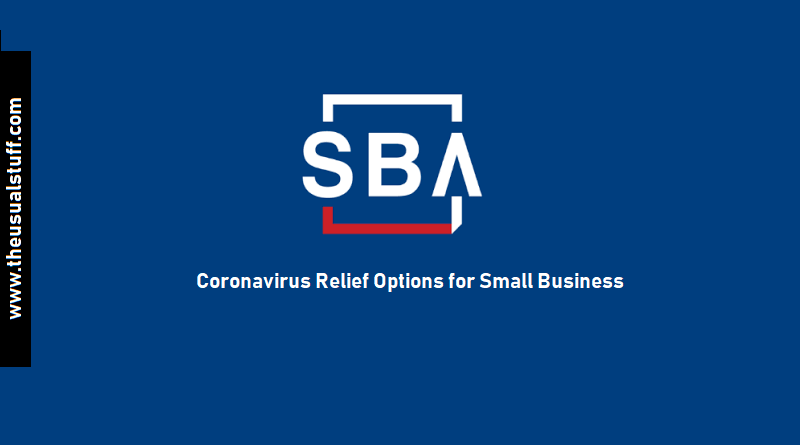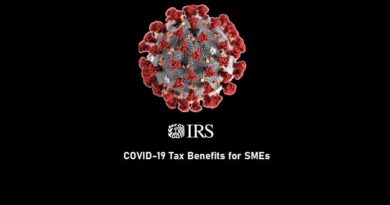How to Apply for SBA Loans through CARES Act?
If you’re a small business owner and been affected by the Coronavirus pandemic one way or the other then here’s news of relief for you. The US government has announced a 2-trillion dollars relief fund under the CARES Act (Corona, Aid, Relief & Economic Security). This relief, to the small businesses, is available in the form of SBA Loans. Then to prepare for this, small business owners need to consider their financial security to look after this money, researching into the different types of business online banking they can get and which is best for them. In these uncertain times, it can be nearly impossible for some small businesses to stay afloat, especially those who rely on regular customers. Unfortunately, some small businesses may have already succumbed to the financial pressures that this pandemic has caused for many. For those who have run into financial difficulties, they might have already sought out services such as a Harrisburg bankruptcy attorney or other financial lawyer in their local area to possibly help them cope if they are about to fall into serious debt.
Although the CARES Act does not only tend to provide aid to the small businesses and in fact, the individuals can also seek relief through it, however, in this article, I’ll restrict myself to the small businesses only and will touch the following topics very concisely. Such as:
- What is SBA?
- What are the different SBA Loans available to small businesses?
- How can businesses apply for SBA Loans?
- SBA loan requirements or in other words, who can apply for SBA loans?
- What forms and what information in those forms are required for different SBA Loans?
- And most importantly, if the option is available then how can you waive off your SBA loans?
I know time is of the essence, so I’ll get to the sweetmeat without further ado. However, for one of the SBA loans below (PPP), since it requires a little bit more detailed discussion, I have written a whole separate article for your guidance. You can see the link in the PPP section below.
What is SBA?
SBA (Small Business Administration) is a US federal entity created in 1953 to help small businesses. The SBA serves as an intermediary between the US government and the businesses.
Needless to say that the loans available through the CARES act flow through SBA. It is a serious and uncertain time right now, with small businesses not sure if they’ll make it through, that is why this help can keep them steady and carry on throughout this period. If they are able to get the help that they require then they may want to check out how resources like https://www.easypaydirect.com/merchant-accounts/auctions-merchant-account/ as well as other business-related assistance, so they can keep on top of their accounts and financial status which can be of benefit to them during this time as well as afterward.
What are the different SBA Loans available for small businesses under CARES Act?
Primarily, in order to provide immediate relief to the small businesses there are 4 major types of loans that SBA is currently offering.
1. Paycheck Protection Program (PPP)

This is basically an extension of the SBA’s 7(a) loan program which aims to provide monetary relief to the businesses by encouraging them to maintain their payroll. Both in terms of monetary amounts and personnel.
What this means is that the businesses can apply for the amount 2.5 times their monthly payroll. The payment of this loan starts after 6 months and the repayment period is 2 years.
The best thing about the PPP is that it can be forgiven if the business maintains its workforce at the level where it was before it got hit by the coronavirus pandemic, for 8 weeks.
Loan obtained under PPP is supposed to be spent on payroll, mortgage payments and other necessary operating expenses.
Eligibility and How to Apply?
I feel that because of the extra details the Payment Protection Program (PPP) deserves its own space. So you guys can follow the link below and check out the article discussing the necessary information about applying for the PPP loan:
Business’s guide to the Paycheck Protection Program (PPP)
2. EIDL Loan Advance

Economic Injury Disaster Loan (EIDL) is an emergency advance loan up to $10,000 for those businesses which are experiencing temporary loss of revenue.
The original loan amount of the regular EIDL is up to $2 million.
Note: If the amount of EIDL is forgiven, it will lower the forgiveness amount of the Paycheck Protection Program
Any business with less than 500 employees can apply for the loan but has to prove that the reduction in their revenue is due to Coronavirus.
Although the amount does not seem significant but the best thing about this advance is that it does not have to be repaid. Essentially making it a grant instead of a loan.
An important thing to keep in mind is that while the businesses can apply for both the PPP and EIDL, they cannot be used for the same purpose.
To simplify it further, you cannot use the loan from PPP and EIDL to say, fund your payroll. So you need to plan beforehand where will you utilize the particular loan.
Eligibility & Forms
Instead of reinventing the wheel here’s a link directly from the SBA’s website which will be more helpful in figuring out if you are eligible and how can you apply for the loan.
3. SBA Express Bridge Loan (EBL)

As the name suggests, if you’re looking for a solution that is more rapid than the two above programs, then SBA’s Express Bridge Loan is for you.
The funds under this loan are disbursed quicker so while you’ve applied for the EIDL, you can request the Express Bridge Loan of up to $25,000 from any of the SBA Express Lender.
This loan aims to provide funds on an emergency-basis just in case you’re in need of urgent cash while waiting for the decision on your application related to EIDL.
Eligibility
In order to be eligible for SBL, you need to fulfill the following conditions:
- Funds must be used to reopen or survival of your business
- Must be operating as of March 13, 2020
- Need to prove that Covid-19 has adversely impacted your business
- Must have less than 500 employees
- Must have a pre-existing relationship with the SBA lender offering SBL as of March 13, 2020.
EBL Repayment Terms
The repayments terms of SBL are as follow:
- Interest rate is 6.5% as announced by the Government. So you can expect an interest rate of 6.5% + spread. The interest rate may be fixed or variable.
- No collateral required
- The lender may charge a fee higher than $250 or the 2% of your loan amount
- The maximum loan term is 7 years.
Is EBL forgivable?
To date, the SBA hasn’t said anything about it so one must assume that you’ll have to repay it.
Form required for EBL
Since the responsibility of screening the applicants lies on the lenders’ shoulders, they may have their own forms, however, at the basic level, the applicant is required to fill out form SBA Form 1919 – Borrower Information Form . This is the same form that’s required to be filled for 7(a) loan as well
4. SBA Debt Relief Program

Under this debt relief program, SBA will pay the principal, interest, and fees of:
- CURRENT 7(a), 504 and microloans for the period of 6 months
- NEW 7(a), 504 and microloans issued before September 27, 2020
In addition to the partial payments above, SBA is also providing automatic deferments to the loan IF it is in “regular servicing” status with SBA.
That’s the main crux of the SBA Debt Relief program. However, if you want to explore more you can access this link
How to Apply for SBA’s Debt Relief Program?
As said above, if your loan in regular servicing status, the SBA will apply deferment automatically and make payments within 30 days of the date on which the first payment of an eligible loan is due.
Having said that, I’d still encourage you to approach your lender to confirm your status and make sure if you qualify under this program.
Which loans are eligible under the Debt Relief Program?
Following loans will fall under the purview of the SBA’s Debt Relief Program:
- 7(a) loan not made under Paycheck Protection Program (PPP)
- 504 loan
- Microloans
Note: Disaster loans are not eligible for the Debt Relief Program
Forms required for Debt Relief Program
Since the relief is provided automatically to the eligible loans and businesses, there’s no need to fill any form.
Where to apply for the SBA Loan and who lends the money?
SBA does not lend money directly to the businesses (or the individuals). In fact, there are registered lenders who have enrolled themselves with SBA. Any business, interested in applying for the loan needs to approach these approved lenders (a.k.a Designated Intermediary Lenders).
These lenders can be your local bank or any other financial institution. For example, Intuit QuickBooks which is not a usual lender but instead a SaaS company providing accounting and tax-related software has also started providing funds under the CARES Act, making it a designated intermediary. lender. So it’s better that you first ask your bank if they’re an approved SBA lender or better yet, ask them the direct question and inquire if they’re offering loans under the CARES Act.
Given the enormous numbers of applications, it’s likely that the banks will deal with their own clients first.
Just in case you still need to know who are the approved SBA lenders, you can check out the complete list of SBA Designated Intermediaries here.
Final Word
The biggest catch of the loans available under CARES Act is that still there are many uncleared aspects of the program. Some of my clients mentioned that how their banks are still unsure about processing applications for these loans as the Government hasn’t provided them with complete and clear instructions yet.
So there’s a lot of ambiguity around, which is understandable given the unexpected calamity and the huge number of applications.
The same goes for the number of days to process a loan application. For instance, one of my clients hasn’t yet received a response despite after 5 days (at the time of writing this article). So the answer to this question is that I’m not sure about it, however, you should expect 10-12 business days for the application to get approved. Expectedly, This time will improve in the future as things get more clearer.
The underlying fact is that if you’re experiencing a “hit” on your business and want to keep the lights on, you must apply for one or more of the above loans at the earliest. Given the unprecedented numbers of applications, the lenders are following the first-come-first-serve rule so make sure that you don’t lose out on this opportunity of keeping your business afloat.




Pingback: Small Business's Guide to SBA's Paycheck Protection Program (PPP) - The Usual Stuff